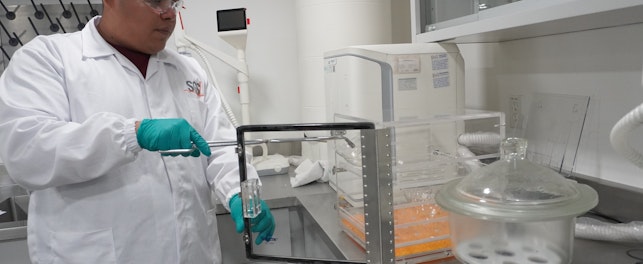Detergent brands have traditionally been able to rely on customer loyalty, but this is no longer the case.1 In a growing market, how can manufacturers take advantage of this new flexibility among consumers?
Customer choice in the grocery store has traditionally been determined by loyalty to a single brand. This has also been true for a wide variety of products – from breakfast cereals to toilet paper. Times are changing, however, and despite the global detergent market being predicted to grow by 4% annually over the next five years, 90% of brands (in all product sectors) are seeing a decline in their market share.2
In a growing market, where consumers have traditionally been fairly conservative in their choices, what can explain this shift in buying patterns?
Consumer Choice
Grocery store customers are faced with a bewildering range of detergent products which, on the surface, all seem to do similar jobs. Consumers have traditionally demanded very little from their products; they simply wanted safe and compliant products that perform as advertised. In recent years, however, various considerations have been added to this list, including country of origin, peer influence, social media influencers, price point, brand image, style statement, and packaging preference. In addition, more customers are also demanding greener options, such as refillable products.3
Packaging preferences are also an important factor to consider. Consumers do not necessarily want a standardized pack size, as some may require smaller packages or bulk buys, depending on their needs.4
There is also complexity in the variety of formats for detergents – powder, liquid, and single-dose – each with its advantages and disadvantages. Liquid detergents are good at removing greasy and oily stains but there is a graying effect because they do not contain bleach. Powdered detergents, however, are cheaper and effective on mud stains and ground-in dirt, but they can be problematic in cold washes. Both liquid and powder suffer from possible overdosing, which is not only financially inexpedient but could also leave residue on clothes. Single-dose packs are generally more expensive, and they lack the ability to match the amount of detergent to the laundry load.5 With single-dose packs, there is also a concern over poisoning, as they are traditionally more concentrated and can be mistaken for candy by young children.6 A survey taken in the US in September 2019 found that liquid detergents are currently the most popular, with 63% of the market.7
Performance Testing
Manufacturers can differentiate their products in the marketplace by making claims relating to functionality, usability, durability, or performance. For example, antistatic effects, the ability to remove grease or limescale, stain removal, or product lifespan. Manufacturers will gain maximum impact for their product if these claims are independently verified.
In recent years, consumers have increasingly demanded greener products. Performance testing is also the ideal way to combat the outdated notion that green products are less effective. By objectively measuring and evaluating products, comparisons can be made between products to prove the effectiveness of green alternatives in comparison to traditional products.
The data gained during performance testing can be used by manufacturers to differentiate their products in the marketplace, while also giving them the time to develop and fine-tune new and existing products.
Consumer Panels
It is easier for manufacturers to ensure their products meet the demands of consumers if they know what they want. Consumer panels provide manufacturers with direct insights into a variety of questions relating to detergents. These include buying habits, how consumers rank a product in comparison to its competitors, and reactions to organoleptic claims (touch, smell, etc.). The data collected from these ‘naïve’ panels can also be cross-referenced with the responses from expert panels of industry specialists.
Panels provide an unbiased insight into the ability of a product to conform to consumer requirements. In combination with performance testing, it affords manufacturers with a comprehensive and independent assessment of their detergent product.
SGS Solution
SGS offers a comprehensive range of services to help manufacturers of detergents and other household care products successfully bring their products to international markets. Products covered include air fresheners, dishwashing and laundry products, bleaches, and surface and toilet cleaners. We provide a wide range of analysis solutions, include chemical, physical, microbiological, toxicological, ecotoxicological and biodegradability testing. In addition, we offer performance testing, packaging assessment, consultancy services, and can organize panels of consumers and experts to assess products and validate claims.
Learn more about our detergents and household care services.
Bianca Nerowski
Division Manager Lab Operations, Cosmetics, Personal Care & Household
SGS Consumer and Retail Services
t: +49 6128 744-27
References
1 The Death Of Brand Loyalty: Cultural Shifts Mean It's Gone Forever
2 Detergents Market & What makes people switch laundry detergent brands? & The Death Of Brand Loyalty: Cultural Shifts Mean It's Gone Forever
3 What makes people switch laundry detergent brands? & Why Detergents Need To Deliver More
4 Consumer Preference towards Detergent Sector
5 How to Choose a Laundry Detergent
6 Single-Load Liquid Laundry Packets Harmful
7 Which of the following do you most often use when doing your laundry?



